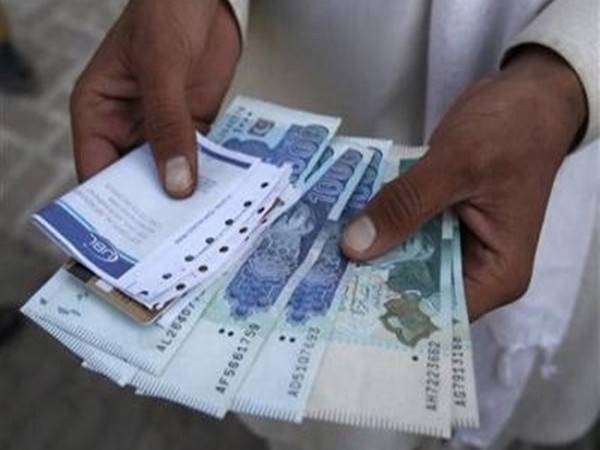
Pakistan’s economic condition is precarious with low foreign exchange reserves and large fiscal and current account deficits, has further worsened by severe flooding….reports Asian Lite News
The World Bank on Tuesday slashed Pakistan’s economic growth by half — from 4 per cent to 2 per cent for the current fiscal year, saying that Islamabad faces mounting economic difficulties, reported The News International.
“Nonetheless, Pakistan faces mounting economic difficulties and Sri Lanka remains in crisis. In all regions, improvements in living standards over the half-decade to 2024 are expected to be slower than from 2010-19,” read the World Bank in Global Economic Prospects report. Pakistan’s economic condition is precarious with low foreign exchange reserves and large fiscal and current account deficits, has further worsened by severe flooding.
About one-third of the country’s land area was affected, damaging infrastructure, and directly affecting about 15 percent of the population, reported The News International.
Moreover, Pakistan, with low foreign exchange reserves and rising sovereign risk, saw its currency depreciate by 14 per cent between June and December and its country risk premium rise by 15 percentage points over this same period.
Recovery and reconstruction needs are expected to be 1.6 times the FY2022/23 national development budget (Government of Pakistan), reported The News International.
The flooding is likely to have seriously damaged agricultural production — which accounts for 23 pc of GDP and 37 pc of employment — by disrupting the current and upcoming planting seasons and pushing between 5.8 and 9 million people into poverty. Policy uncertainty further complicates the economic outlook.
Pakistan’s consumer price inflation reached 24.5 per cent in December on an annual basis, recently coming off its highest rate since the 1970s, reported The News International.
This is mainly due to weak growth in Pakistan, which is projected at 2 per cent in FY2022/23, half the pace that was anticipated last June.
Meanwhile, amid biting inflation and shrinking purchasing power, the Oil and Gas Regulatory Authority (OGRA) has dropped a gas bomb on the masses as it increased the tariff for consumers of two sui gas companies by up to 74 per cent, effective from July 2022, reported Geo News.
The regulator, in a notification issued on Wednesday, hiked the tariff of Sui Northern Gas Company Limited (SNGPL) and Sui Southern Gas Company (SSGC) for household consumers, commercial sector, tandoors, captive power plants and general industries, including the export-oriented sector.
The regulator has abolished the earlier applicable slabs of gas consumption and their respective rates and fixed the price at 952.17 per Million British Thermal Unit (MMBTU) for Sui Northern Gas Company Limited (SNGPL) consumers. Likewise, for Sui Southern Gas Company (SSGC), the prescribed prices have been fixed at Rs 1161.91/MMBtu.
Having a cursory look at the decision, lower slabs who consume less and are almost poor consumers are most affected as their gas prices have tripled, while for the higher slabs, the prices have been literally reduced.

PKR hits new low against USD
Amid the faltering economy and depreciating currency, the Pakistani rupee continued to lose its value against USD, falling to Rs 227.88 against the dollar in the interbank market, reported The Express Tribune.
The fresh drop came after the government failed to make any headway in its talks with the International Monetary Fund (IMF) for the revival of its stalled USD 6.5 billion loan programme. The domestic currency has cumulatively lost 4.42 per cent (Rs10.09) of its value in the last three months, compared to Rs 217.79 in early October.
With the IMF programme still halted, the country’s foreign exchange reserves have depleted to USD 6.5 billion – hardly enough to provide a 25-day import cover to the country, reported The Express Tribune.
Financial experts said that the interbank exchange rate of Rs 227.88 was not the real value of the rupee. Instead, the US dollar was available in the black market for as high as Rs 270.
Finance Minister Ishaq Dar has tried to artificially control the rupee value in the interbank market, which was also one of the leading reasons behind the delay in the resumption of the IMF programme. The lending institution has asked the government to let market forces (commercial banks) determine the rupee-dollar parity, reported The Express Tribune.
The dwindling foreign exchange reserves have forced the government to curb imports, badly impacting economic activities in the country.
A number of industrial units have either closed partially or completely amid the non-availability of imported raw materials.
Moreover, the country’s foreign debt obligations for the next six months stand at USD 13 billion, sparking concerns about Pakistan defaulting on them.
Therefore, the resumption of the IMF programme is the only lifeline for the nation to avert default, reported The Express Tribune.
On the other hand, the local gold prices dropped by Rs 3300 to Rs 181,800 per tola, according to the All-Pakistan Sarafa Gems and Jewellers Association (APSFJA).
This was despite the fact that international gold prices had seen an increase of USD 5 per ounce to touch USD 1,876 on the same day, reported The Express Tribune.
The drop in the local market, against an increase in the international market, suggests that the demand for the commodity had dropped in the domestic market, added the experts. (ANI)
ALSO READ: China under-reports Covid-19 deaths: WHO chief


